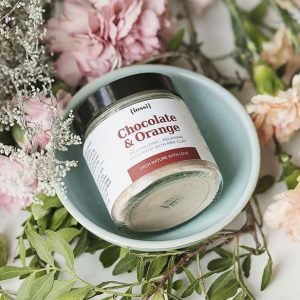
You’d think detoxing your beauty cabinet would be as simple as reading a label, but it’s a little more complicated than that. You’ve probably heard about not only green beauty but also clean, organic, botanical and natural beauty. But what exactly are the differences? What do these terms even reveal? And does making this change truly make an impact?
A Brief History of the Green Beauty Movement
These days, it’s not at all uncommon for customers to research the origins of cosmetic ingredients like parabens, phthalates, SLSs and petroleum, thanks to organizations advocating for brand transparency on behalf of consumers.
But even as recent as the early to mid-2000s, controversial ingredients were hardly questioned. In fact, very few mainstream brands focused on phasing out these ingredients and most “natural” brands were relegated to small sections in health-food stores.
Although more and more companies were formulating products with natural ingredients in them, it wasn’t until 2010 when considerably more emerging companies began exploring the incorporation of cleaner, safer ingredients. Then, since 2013, more mainstream companies and retailers embraced the green beauty movement due to consumer demand, and in 2018, larger, traditional brands committed to becoming more transparent as well.
What Is Green Beauty?
Generally speaking, “green beauty” is an umbrella term that refers to totally natural skincare made with true-to-nature or naturally derived ingredients in the lab. Some might take it a step further and say green-beauty products should be made by using sustainable and renewable resources. Green beauty is also often called “eco beauty.”
Natural and Organic Beauty
Natural beauty products are supposed to use ingredients that are pure, synthetic-free and sourced from nature (land or sea). Examples include plant oils (botanicals) and sea salts. However, “natural” does not necessarily mean it’s literally 100% natural (technically, a product can mix only one natural ingredient along with synthetics and still be labeled as “natural”).
Organic beauty products are supposed to involve the use of organically farmed ingredients, avoiding the use of potentially harmful substances like Genetically Modified Organisms (GMOs), herbicides and synthetic fertilizers. But sadly you can’t always automatically trust the label. Like with “natural”, a company can say a product is “organic” just because there’s a single organic ingredient in there. Make sure you specifically look for certifications. This certification is enough to give you peace of mind that almost all of the ingredients in the product have been grown and processed in regulated conditions that mandate cleanliness, and that it does not contain pesticides, synthetic preservatives, petrochemicals, GMOS or ionizing radiation.
There are certifications such as ECOCERT, which require “the absence of GMOs, parabens, phenoxyethanol, nanoparticles, silicon, PEGs, synthetic perfumes and dyes, animal-derived ingredients (unless naturally produced by them: milk, honey, etc.)” and “a minimum of 95% of all plant-based ingredients in the formula and a minimum of 10% of all ingredients by weight must come from organic farming” for the “natural and organic” label.

Clean Beauty
“Clean beauty” is best known for avoiding ingredients that are considered toxic (whether the ingredient has been scientifically confirmed as toxic or is still controversial), carcinogenic or harmful to the environment (whether they are natural or not). However, the general belief of “clean beauty” is that not all synthetic ingredients are harmful, and a small amount may still be used to act as binders, stabilizers or to mask natural odors. Overall, “clean beauty” tends to be less stringent with natural-ingredient selection.
In comparison, a true “green beauty” brand ensures that their ingredients are not only absolutely natural, organic, safe and effective, but are also completely free from controversy.
Indie Beauty
Many people assume that “indie beauty” means “green beauty” since many brands are both, but the two are not the same. Indie beauty generally means the brand was founded and/or is operated by an entrepreneur—and there is typically no funding from cosmetic corporations. Financial investment is provided by either the entrepreneurs themselves or through ethical funding sources or funds. Indie beauty brands sometimes focus on quality, sustainability and pro-community, while others aim to create products that are both luxurious and artisanal but again: not all indie brands are exclusively focused on totally green beauty.
Why Switch to Green Beauty Brands?
Consider the fact that skin is our largest organ and absorbs up to 70% of what we apply topically. Although there are plenty of ingredients that still require further study, there are many that are confirmed as harmful or controversial for the human body and the environment. For example, several medical studies have pointed out that chemicals such as phthalates can be potential hormone disruptors.
Committing to green beauty is a smart decision—for your own health and for the earth.


